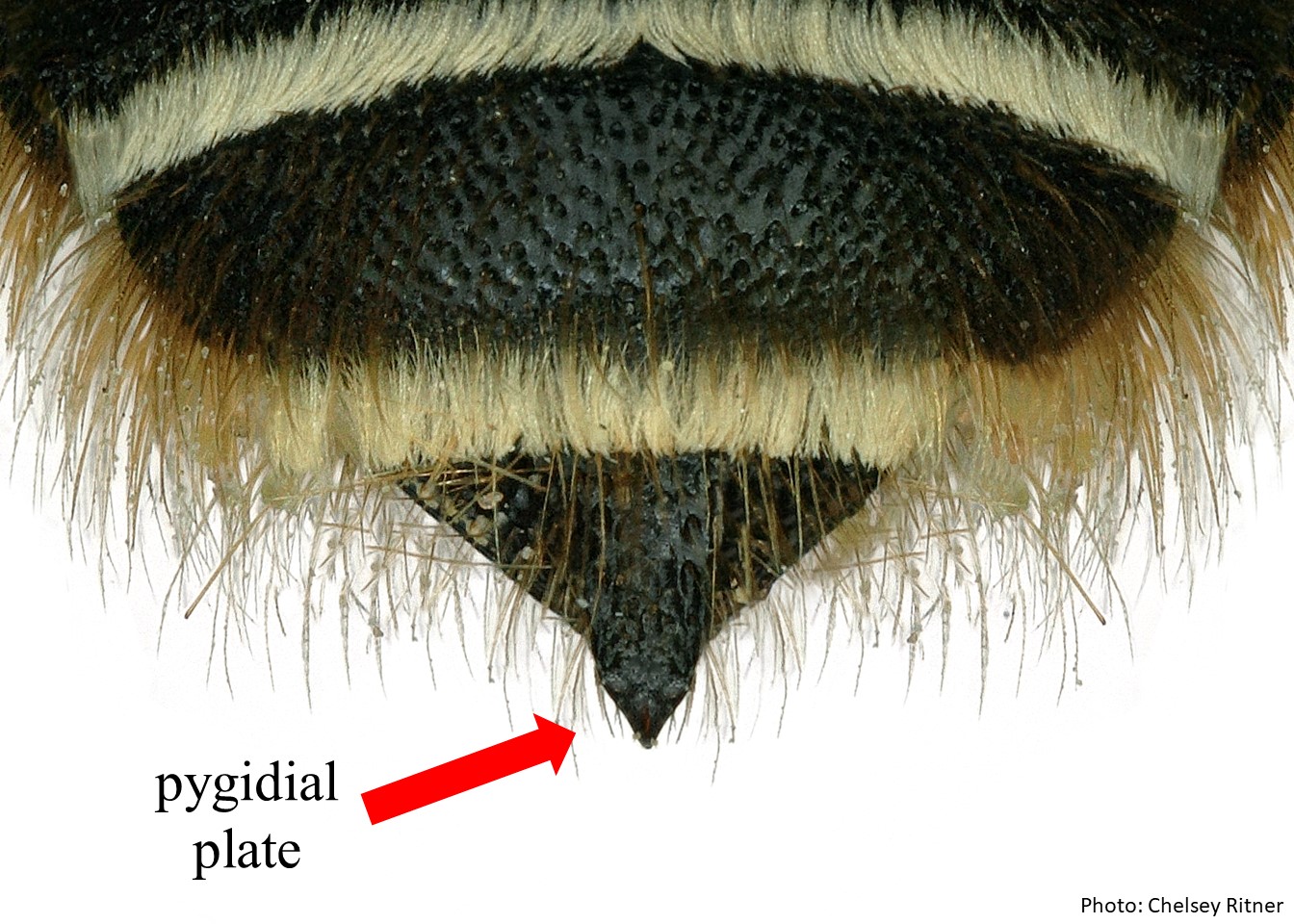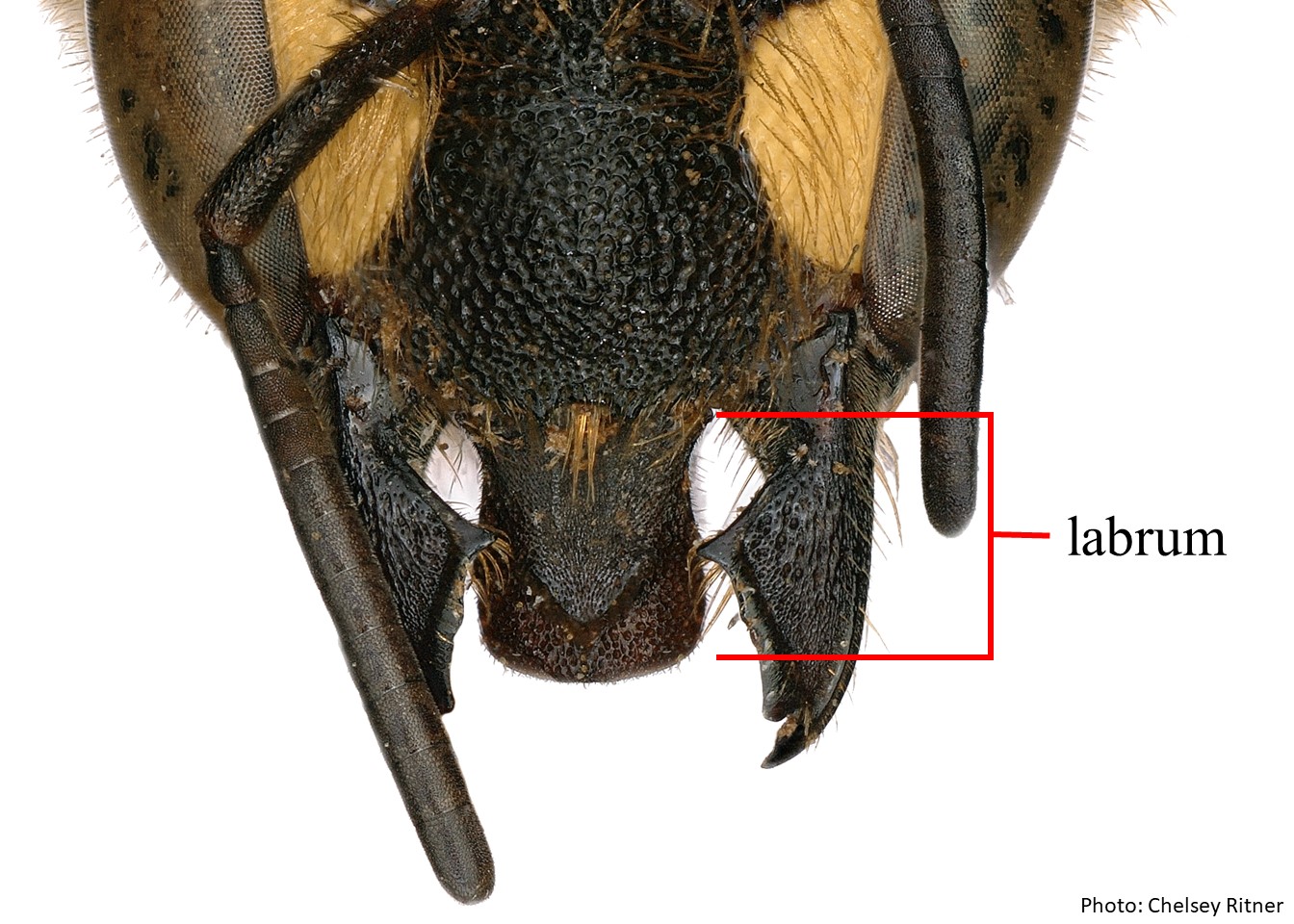Family: Apidae
Subfamily: Xylocopinae
Tribe: Ceratinini
Genus: Ceratina Latreille, 1802
Subgenus: Calloceratina, Catoceratina, Ceratina, Ceratinidia, Ceratinula, Chloroceratina, Copoceratina, Crewella, Ctenoceratina, Dalyatina, Euceratina, Hirashima, Lioceratina, Malgatina, Megaceratina, Neoceratina, Neoclavicera, Pithitis, Protopithitis, Rhysoceratina, Simioceratina, Xanthoceratina, Zadontomerus
Common name: small carpenter bees
Ceratina are slender, minute to medium-sized bees, usually with black, shiny integumentintegument:
a tough, protective outer layer
, but some species can be bright green to blue or have red abdomens (Daly, 1973; Michener 2007Michener 2007:
Michener, C.D. 2007. The Bees of the World (2nd ed.). Johns Hopkins University Press, Baltimore and London, 953 pp.). Most species have limited yellow to pale or cream colored markings on the head, legs, and pronotal lobes but some have extensive maculations on their bodies (Michener 2007Michener 2007:
Michener, C.D. 2007. The Bees of the World (2nd ed.). Johns Hopkins University Press, Baltimore and London, 953 pp.). Ceratina have sparse pubescencepubescence:
short, fine hair
that make them appear hairless from a distance, and they have reduced, almost absent, scopascopa:
modified hairs for carrying pollen; often branched and dense hairs on the hind-leg, or on the ventral surface of the abdomen in Megachilidae
(Michener 2007Michener 2007:
Michener, C.D. 2007. The Bees of the World (2nd ed.). Johns Hopkins University Press, Baltimore and London, 953 pp.). They range in body length from 2.2–12.5 mm (Michener 2007Michener 2007:
Michener, C.D. 2007. The Bees of the World (2nd ed.). Johns Hopkins University Press, Baltimore and London, 953 pp.).
(modified from Michener 2007Michener 2007:
Michener, C.D. 2007. The Bees of the World (2nd ed.). Johns Hopkins University Press, Baltimore and London, 953 pp.)
 .
. absent.
absent. broader than long, without basalbasal:
broader than long, without basalbasal: .
. simple, without apicalapical:
simple, without apicalapical:Ceratina may be confused with other small bees with similarly colored integumentintegument:
a tough, protective outer layer
and yellow maculations on the face such as Hylaeus, or bees in the tribe Allodapini (Daly 1973Daly 1973:
Daly, H. V. 1973. Bees of the genus Ceratina in America North of Mexico (Hymenoptera: Apoidea). University of California Publications in Entomology 74: 1ndash;114.; Michener 2007Michener 2007:
Michener, C.D. 2007. The Bees of the World (2nd ed.). Johns Hopkins University Press, Baltimore and London, 953 pp.). Ceratina can be separated from these similar-looking genera by the forewing, which has three sub-marginal cells (Michener 2007Michener 2007:
Michener, C.D. 2007. The Bees of the World (2nd ed.). Johns Hopkins University Press, Baltimore and London, 953 pp.).
Ceratina are polylecticpolylectic:
bees that collect pollen from the flowers of a variety of unrelated plants
and have been found visiting flowers from plant genera in a number of different families including Anacardiaceae, Apiaceae, Araliaceae, Asteraceae, Cynareae, Brassicaceae, Boraginaceae, Campanulaceae, Chenopodiaceae, Convolvulaceae, Dipsacaceae, Euphorbiaceae, Fabaceae, Lamiaceae, Liliaceae, Malvaceae, Oleaceae, Plumbaginaceae, Scrophulariaceae, Simaroubaceae, Tamaricaceae, Resedaceae, Rosaceae, Rutaceae, and Vitaceae (Daly 1973Daly 1973:
Daly, H. V. 1973. Bees of the genus Ceratina in America North of Mexico (Hymenoptera: Apoidea). University of California Publications in Entomology 74: 1ndash;114.; Mitchell 1962Mitchell 1962:
Mitchell, T.B. 1962. Bees of the Eastern United States. Vol. II. North Carolina Agricultural Experiment Station Technical Bulletin 152:1ndash;557.; Terzo and Rasmont 2011Terzo and Rasmont 2011:
Terzo, M. and P. Rasmont. 2011. Atlas of the European Bees: genus Ceratina . STEP Project, Atlas Hymenoptera, Mons, Gembloux. Accessed 1-Sep-2020, http://www.zoologie.umh.ac.be/hymenoptera/page.aspx?ID=192).
Ceratina nest in pithy stems or twigs, which they excavate and build their nest cells inside (Michener 2007Michener 2007:
Michener, C.D. 2007. The Bees of the World (2nd ed.). Johns Hopkins University Press, Baltimore and London, 953 pp.). Their nest cells are unlined with partitions between cells made of loosely held together pith particles (Michener 2007Michener 2007:
Michener, C.D. 2007. The Bees of the World (2nd ed.). Johns Hopkins University Press, Baltimore and London, 953 pp.). Most species are solitary, but in some species the nest may be occupied by two or more, usually related, females that have been shown to exhibit some division of labor (Michener 2007Michener 2007:
Michener, C.D. 2007. The Bees of the World (2nd ed.). Johns Hopkins University Press, Baltimore and London, 953 pp.).
Ceratina includes more than 300 described species (Michener 2007Michener 2007:
Michener, C.D. 2007. The Bees of the World (2nd ed.). Johns Hopkins University Press, Baltimore and London, 953 pp.).
Four species have been documented as invasive in the U.S.
Ceratina (Ceratinula) arizonensis has been inadvertently introduced from North America into Hawaii. It was first reported on Oahu in 1950 and has since established and spread to other Hawaiian islands (Hirashima 1971aHirashima 1971a:
Hirashima, Y. 1971. Subgeneric classification of the genus Ceratina Latreille of Asia and West Pacific, with comments on the remaining subgenera of the world (Hymenoptera, Apoidea). Journal of the Faculty of Agriculture Kyushu University 16 (4): 349ndash;375.).
Ceratina (Euceratina) dallatorreana, which is originally from the Mediterranean region, was first reported in California in 1949 where it is now established (Daly 1966Daly 1966:
Daly, H.V. 1966. Biological studies on Ceratina dallatorreana , an alien bee in California which reproduces by parthenogenesis (Hymenoptera: Apoidea). Annals of the Entomological Society of America 59(6): 1138ndash;1154.). This species reproduces by thelytokous parthenogenesis; only females have been found in the U.S. (Daly 1966Daly 1966:
Daly, H.V. 1966. Biological studies on Ceratina dallatorreana , an alien bee in California which reproduces by parthenogenesis (Hymenoptera: Apoidea). Annals of the Entomological Society of America 59(6): 1138ndash;1154.).
Ceratina (Neoceratina) dentipes and Ceratina (Pithitis) smaragdula are native to Southeast Asia and are thought to be invasive throughout the South Pacific. They have been introduced and have established populations in Hawaii and were likely introduced somewhat recently through shipping traffic (Shell and Rehan 2017Shell and Rehan 2017:
Shell, W.A. and S.M. Rehan. 2017. Range expansion of the small carpenter bee Ceratina smaragdula across the Hawaiian Archipelago with potential ecological implications for native pollinator systems. Pacific Science 71 (1): 1ndash;15.; Shell and Rehan 2019Shell and Rehan 2019:
Shell, W.A. and S.M. Rehan. 2019. Invasive range expansion of the small carpenter bee, Ceratina dentipes (Hymenoptera: Apidae) into Hawaii with implications for native endangered species displacement. Biological Invasions 21: 1155ndash;1166.).
Ceratina has a cosmopolitan distribution and can be found on every continent; however, the genus is rare and limited in distribution in Australia (Michener 2007Michener 2007:
Michener, C.D. 2007. The Bees of the World (2nd ed.). Johns Hopkins University Press, Baltimore and London, 953 pp.).
Distribution map generated by Discover Life -- click on map for details, credits, and terms of use.
Daly, H.V. 1966. Biological studies on Ceratina dallatorreana, an alien bee in California which reproduced by Parthenogenesis (Hymenoptera: Apoidea). Annals of the Entomological Society of America 59(6): 1138–1154.
Daly, H.V. 1973. Bees of the genus Ceratina in America north of Mexico (Hymenoptera: Apoidea). University of California Publications Entomology 74: 1–113.
Hirashima, Y. 1971. Subgeneric classification of the genus Ceratina Latreille of Asia and West Pacific, with comments on the remaining subgenera of the world (Hymenoptera, Apoidea).Journal of the Faculty of Agriculture Kyushu University 16 (4): 349–375.
Michener, C.D. 2007. The Bees of the World (2nd ed.). Johns Hopkins University Press, Baltimore and London, 953 pp.
Mitchell, T.B. 1962. Bees of the Eastern United States. Vol. II. North Carolina Agricultural Experiment Station Technical Bulletin 152:1–557.
Shell W.A. and S.M. Rehan. 2017. Range expansion of the small carpenter bee Ceratina smaragdula across the Hawaiian Archipelago with potential ecological implications for native pollinator systems. Pacific Science 71 (1): 1–15.
Shell W.A. and S.M. Rehan. 2019. Invasive range expansion of the small carpenter bee, Ceratina dentipes (Hymenoptera: Apidae) into Hawaii with implications for native endangered species displacement. Biological Invasions 21: 1155–1166.
Terzo, M., and P. Rasmont. 2011. Atlas of the European Bees: genus Ceratina. http://www.atlashymenoptera.net/page.aspx?id=192 Accessed 5-Dec-2020.